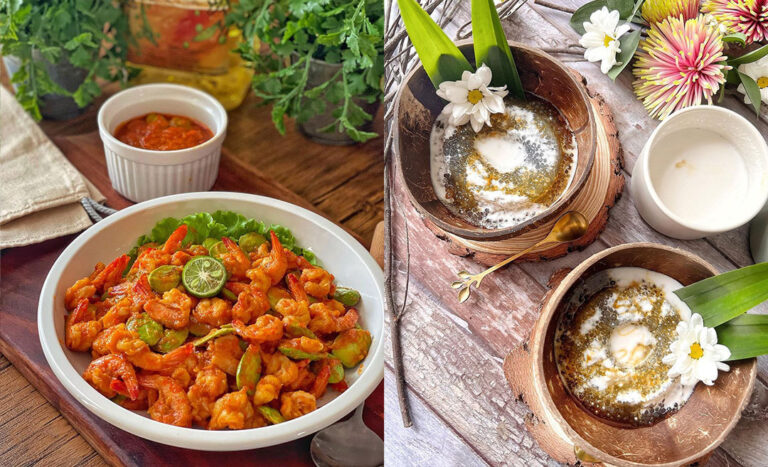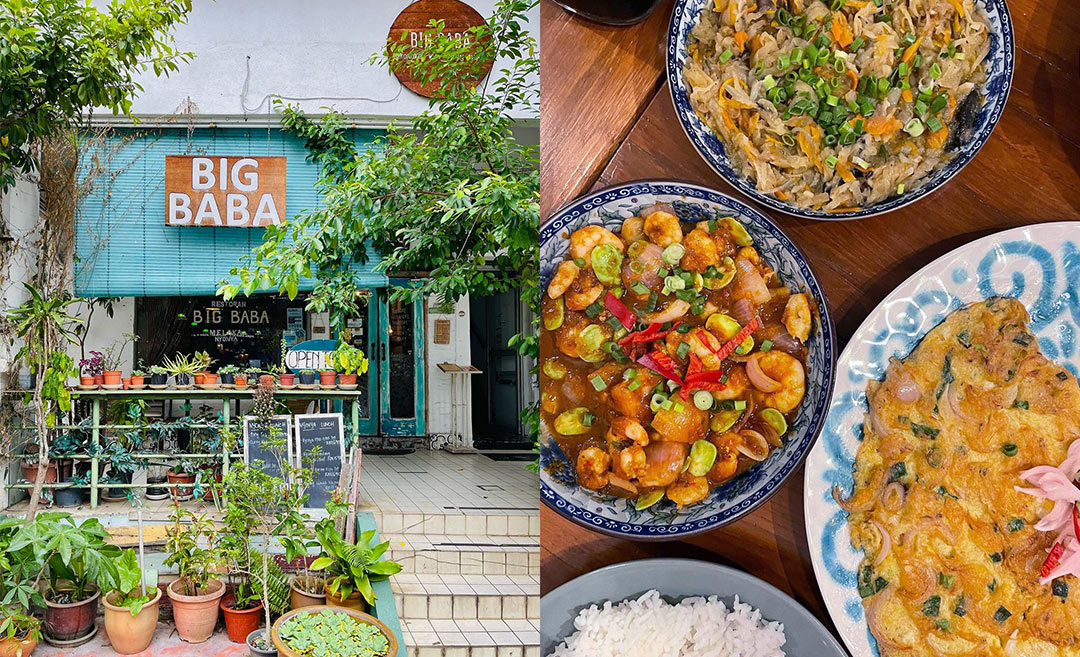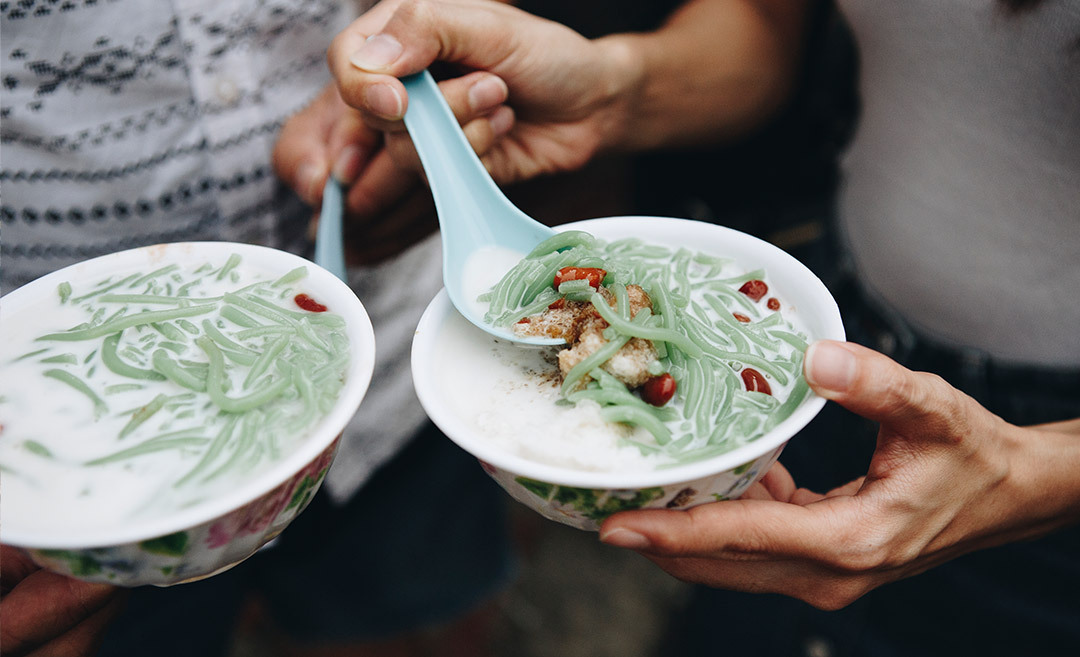One of Southeast Asia’s unique cuisines has definitely got to be Baba-Nyonya cuisine, which sees the marriage of the Chinese cooking with Malay ingredients. It results from unions between Chinese immigrants and local Malaysians during the 15th and 16th centuries. Due to the need for spices during the period, a European colony with sizeable estates cultivating cloves, pepper, and nutmeg arose in Melaka, a key Portuguese and Dutch trading gateway.
Chinese traders and business people rushed to Melaka, anxious to profit from these riches and seeking to flee the starvation and suffering under the Qing dynasty’s control. The Baba-Nyonya population was established due to intermarriage between the predominantly male Chinese settlers and Malay women.
While maintaining Chinese traditions and religious beliefs, the Baba-Nyonyas embraced Malay customs and social norms, and over time created their own distinctive dialect — Baba Malay. However, their fusion of Malay and Chinese cuisine has remained their most incredible legacy.
With soured sauces and coconut milk, their cuisine combines Malay ingredients and seasonings with Chinese wok cooking techniques. The flavours of salt, sweet, sour, and spice are all present in Nyonya or Peranakan cuisine.
Here are some of the key dishes you should know about (and try), and once you’re done, you can head over to any of these Peranakan restaurants for a feast.
1. Otak-otak
Otak-otak is a traditional Nyonya dish common in Singapore and Malaysia. This dish traditionally consists of a steamed fish cake wrapped in banana leaves. Ground fish is combined with flavours like lemongrass, chillis, and turmeric to make the said otak-otak.
Betel leaves, also known as daun kaduk, are included in the well-known Penang variation for added flavour.
2. Laksa Nyonya
Another staple from Peranakan cuisine is laksa Nyonya, a delectable coconut curry soup. Laksa comes in various forms, and regional variances affect the contents. The dish is typically served with thick rice noodles or thin vermicelli and a fish-based broth cooked with prawns, sometimes including chicken.
Finally, the finished dish is topped with Vietnamese coriander, sliced cucumber, omelette, clams, fish ball, and foo chok (fried bean curd). A dollop of sambal paste is often added to add that extra depth to the dish.
3. Nyonya acar fish (acar hu)
With a mix of sweet and salty, this dish is a Baba-Nyonya classic. Known affectionately as acar hu, it is traditionally deep-fried, then seasoned with garlic, ginger, and chillis, and pickled in a turmeric-vinegar base.
The delectable dish is the ideal combination of sweet, sour, and acidic flavours, best served with steaming hot rice. Turmeric and ginger are powerful antioxidants and anti-inflammatories, so acar hu is thought to provide therapeutic benefits.
4. Sambal petai
In this specific recipe, prawns are stir-fried with the petai (bitter beans) and then served with a sweet and sour sambal sauce. If you have never tasted petai or believe that you don’t like them, you should try this dish. We can almost guarantee that it will forever change how you see this stinky bean!
5. Nasi ulam
Nasi ulam is a prime illustration of Malay cuisine’s influence on the Peranakans. You’ll discover that every nasi ulam dish is unique, but with most of the recipes containing shallots, coconut paste, and rice. The remainder of the ingredients consists of fresh, regional vegetables and herbs often combined with the rice.
Some recipes’ ingredient lists may include finely-shredded fresh turmeric root, pink torch ginger, wild betel leaves, Thai basil leaves, and Vietnamese mint. This dish is also almost always served with salted fish or dried shrimp and a side of sambal for that added heat.
6. Ayam pongteh
Usually served with steamed rice, ayam pongteh is a flavourful meat dish of stewed chicken and potatoes in a thick gravy sauce. To give the dish its dark colour, dark soy sauce and palm sugar are added to a thick mixture of chopped shallots and garlic, and are sautéed until aromatic. The chicken is added, along with water, potatoes, and mushrooms, and simmered until the chicken is cooked and the gravy thickens.
7. Pai tee
These adorable little pastries have prawn and vegetable filling that looks like top hats turned upside down, making them cute starters and oh-so-delicious! It’s pretty difficult to stop at just having one of these delightful treats traditionally served with sweet chilli sauce for dipping.
8. Ikan Cencaru
This well-known Nyonya dish is an entire fish that is deep-fried once filled to the brim with sambal. A popular dish served in Peranakan homes or restaurants, it’s usually shared due to the size of the fish. Seafood was definitely the top choice for the Peranakan people of Penang and Melaka, which is clearly apparent in this dish.
9. Bubur Cha Cha
Bubur cha cha is a dessert consisting of thick coconut milk, sweet potato and taro cubes, tapioca jelly, and a small quantity of sago. And over the years, there have been many variations to this classic dish, and the durian bubur cha cha is definitely worth trying. This sweet treat is the perfect dish to order after indulging.
10. Sago Gula Melaka
Gula Melaka is another name for palm sugar. With only three ingredients — coconut milk, sago pearls, and gula Melaka — this dessert appears to be easy to prepare, and you’d be correct. Still, you must get quality ingredients for it to taste perfect. Sago gula Melaka is usually served in a small bowl, sometimes with shaved ice on top.



